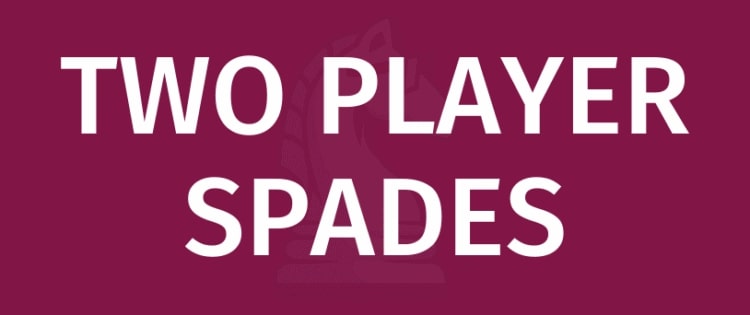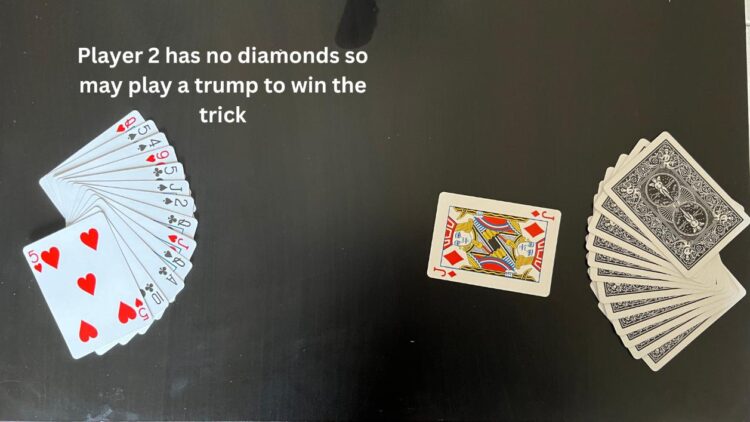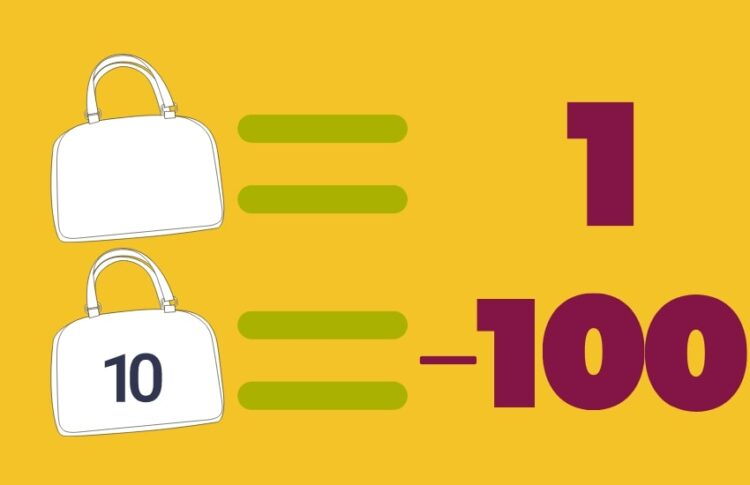
OBJECTIVE OF SPADES FOR 2 PLAYERS: Win the right number of tricks and be the first player to score 500 points.
NUMBER OF PLAYERS: 2 players
MATERIALS OF SPADES FOR 2 PLAYERS: Standard 52 card deck, no jokers
TYPE OF GAME: Card game
AUDIENCE: Teens and adults
OVERVIEW OF SPADES FOR 2 PLAYERS
Spades for 2 players is a super fun trick-taking game that challenges players to determine precisely how many tricks they believe they can take. Are you up for the challenge and ready to determine if you or your friend is the better card game master? This is the game for you! In this game, players are penalized for taking too few as well as too many, so be careful!
While Spades is traditionally a team-based game for four players, this two-player version also deserves a shout-out. So, without further ado, let’s dive into the rules for Spades for 2 players.
Don’t worry; if you’re not much of a reader, we also go over the rules in the video above!
SETUP FOR SPADES FOR 2 PLAYERS
What separates two-player Spades from the classic version is how the hands are created. There is no deal in this game. Each player will take turns building their hand of thirteen cards – one card at a time.
So, simply shuffle the deck and then place it in the center of the playing space.
DRAWING 13 CARDS
The non-dealer draws a card from the top of the pile. They may then choose to keep that card or place it face up in the discard pile.
If the player keeps it, then the next card is immediately placed face-up on the discard pile. If the player does not want the card they drew, then they discard it and must keep the second card. Cards may not be drawn from the discard pile.
The second player then does the same. They also draw a card and then choose to keep it or discard it. If they keep it, the next card immediately goes to the discard pile. If they don’t want it, then they discard it and immediately take the next card. This process is repeated until each player has a hand of thirteen cards.
Then, place the discard pile to the side. You will ignore this pile until the next hand.
THE BID
Each player looks at their hand and then determines how many tricks they believe they can take. Spades are always the trump suit in this game, as evidenced by the name of the game. The non-dealer bids first. They may bid from 0 to 13 tricks. Remember: since you have 13 cards, bidding 13 tricks means you believe you’ll win all the tricks!
BIDDING NIL AND BLIND NIL
Bidding zero is called going nil. This means that the player thinks they will not take any tricks. Special points are awarded for going nil successfully, but more on this below!
You can also choose to bid blind nil. This means you cannot look at your cards before making this bid! You must make this bid before drawing from the deck the first time.
SHOOTING THE MOON
When a player thinks they can take all 13 tricks, that’s called shooting the moon. Special points are awarded for shooting the moon successfully.
Players do not have to overbid each other. Each player simply states how many tricks they think they can take. The scorekeeper must then write the bids down.
HOW TO PLAY SPADES FOR 2 PLAYERS
The non-dealer leads first. They choose a card and play it in the center. Keep in mind that you cannot play spades (the trump suit) until that suit is broken. Spades are broken when a player is unable to follow suit or only has spades left in their hand.

The opposite player must follow suit if they can. If they cannot follow suit, they may play any card that they wish (including a spade).
For example, if the first player leads with a king of hearts, the following player must lay a heart. If they are unable to lay a heart, they may play any card from their hand – including a spade.
The player who played the highest card in the suit that was led or the highest spade wins the trick.
Whoever takes the trick leads next.
Play like this continues until all 13 cards have been played.
Deal alternates between players. The non-dealer will always draw and lead first.
Looking for other games to play with just one other player? Check out our top 2 player card games!
SCORING
Players earn ten points for each trick that helps them meet their bid.
For example, if a player bids 6 and takes 6 tricks they earn 60 points for doing so.
Tricks taken beyond the player’s bid are called bags. Bags are worth just 1 additional point.
For example, if a player bids 6 and takes 7, they earn 61 points. But be careful! A player loses 100 points for every ten bags they take.

FAILING THE BID
If a player does not meet their bid, they lose 10 points for each trick they bid on.
For example, if a player made a bid of 6 tricks, and only took 5, they would lose 60 points from their score. Yikes!
BIDDING NIL
If a player bids nil (meaning they think they will take zero tricks) and is successful, they earn 100 points. If they fail to take zero tricks, the captured tricks count as bags, so that’s just 1 point for each trick won.
For example, if a player bids nil and takes 5 tricks, they would earn just 5 points for the hand.
Successful blind nils earn 200 points!
SHOOT THE MOON
If a player shoots the moon and is successful, they earn 250 points!
If the player fails to take all of the tricks, the tricks they do take count as bags.
For example, if a player shoots the moon and only takes 9 tricks, they would earn 9 points. Remember, every ten bags costs the player 100 points from their score.

END OF GAME
Keep playing round after round, and keep track of the score. The first player to reach 500 points wins the game.

If you love 2-player Spades, be sure to try out the classic Spades for larger groups.
FAQ
What Is the Ranking for 2-Player Spades?
The ranking for Spades is A (high), K, Q, J, 10, 9, 8, 7, 6, 5, 4, 3, and 2(low).
When You Play Spades, What Is Bid Nil and Blind Nil?
When you bid nil, you are bidding that you will take no tricks during the round. The same is true for blind nil with the addition that you cannot look at your cards before making this bid.
What Is the Number of Tricks per Round of Bidding?
A round of bidding consists of 13 tricks.
What Happens If You Cannot Follow Suit?
If a player is unable to follow suit, they may play any card from their hand including a trump card.
- TRIPLE SNAKES - February 15, 2021